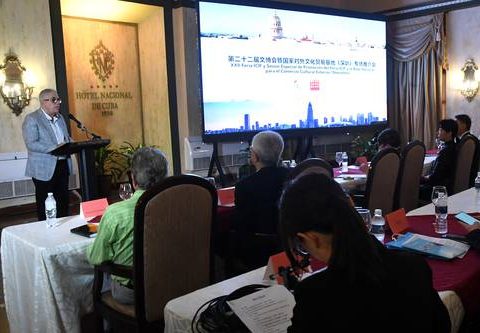C
on Luther, Wittenberg became the main printing center in Germany. The small town had a population of 2 thousand inhabitants at the beginning of the 16th century. It lacked academic prestige because its university was only a few years old (Frederick the Wise founded it in 1502) at the time of Luther’s irruption against the sale of indulgences in October 1517. Luther’s editorial impact and his increasingly contrary theological propositions to the Roman Catholic Church, they attracted students from all over Europe and Wittenberg became a disseminating center of ideas that shook the entire Old World.
The first edition of the New Testament translated from Greek into German by Luther came off the press in September 1522, with a print run of 3,000 copies that sold out in a few weeks. The second edition, to which the translator made considerable corrections, was published in December, and likewise great demand meant that the Wittenberg presses were insufficient to satisfy those wishing to purchase a copy, resulting in pirate prints being produced in various German cities. .
From the end of 1517, Luther emerged as the best-known writer in Europe, in such a way that by September 1522, when he published the translation of the New Testament, he was already a fully established author and followed by more public than any other. To assess the place he had in the publishing market of the time, it is necessary to take into account that more than a third of the books sold in Germany between 1518 and 1525 were written by the former Augustinian monk. Theophanes Egido mentions that the booklet On Indulgences and Grace (1518), in which he defended The 95 Theses from critics of his opponents, got 22 reprints in two years. Such was the demand for the Address to the Nobility of the German Nation (1520) that the copies sold out within a week. Another writing of 1520, the freedom of the Christian, reached 18 editions in five years.
Two testimonies from those who sought to get hold of his works account for the editorial cannon shot represented by Luther. In 1519 a friend of Agrippa von Nettesheim (a German philosopher) wrote to him from Basel to let him know that, after having searched the entire city for Luther’s prints, the same they weren’t available anywhere, because they had all been sold
. Spalatino, adviser to Frederick the Wise and who recommended him to protect the rebel, reported that at the Frankfurt Book Fair of 1520 nothing was bought more often and read with greater appetite
than the works of Luther.
Luther’s New Testament translation meant placing an essential resource in the hands of potential readers so that they would know for themselves what Christianity consisted of. An effect not intended by the translator manifested itself in the cultural field, since he gave a literary expression to the German language that he had not had until then. Lyndal Roper expresses it well: In less than 11 weeks, he translated the entire New Testament from the original Greek, not from the Vulgate, the Latin translation that had dominated the Church until then. It was the work of a genius. Luther’s New Testament reshaped the German language, as Luther’s German became dominant, unifying what had been a wide range of local dialects.
(Martin Luther, Renegade and Prophet, Random House, 2016, pp. 195 and 196).
If Luther’s translation was widely read and acted as a trigger for others to translate the Greek documents of the New Testament into different European languages, on the other hand his work was harshly criticized and he was accused of distorting and adapting the teachings of the Gospel to his interests. Herón Pérez Martínez notes, in the introduction to Martin Luther’s Missive on the art of translating (September 1530), how Duke George of Saxony (1471-1539) “as soon as the translation of the New Testament came to light into German made by Luther […] hastened to prohibit in his domains, by decree dated 1522, its purchase or sale” (http://www.revistarelaciones.com/index.php/relaciones/article/view/120/149).
The premises that Luther exposed in the letter about his translation as necessary to carry out a good job conform, affirms Pérez Martínez one of the most important documents for the western history of translation theory
and by defending that To translate, it is not enough to know both languages involved in the process well, you have to know the theme or subject that the text deals with
was laying the groundwork for the desirable characteristics of a good translator”.
By fulfilling the profile he described himself, his translation of the Bible was able to be understood by a wide audience. The source language and the target language have to come together to produce a text that is true to the first and relevant to the second.
















